Explore user behaviour with Path
Introduction
Path is a Formula that leverages a Sankey diagram to display the different paths which subjects take between two events. You can think of Path as a Funnel in which you don't know all the steps in the middle. It is an instrument intended to aid your exploratory analysis of user journeys.
Path analysis supports a maximum of 10 steps. Mouse-over an edge to see the number of unique users on both sides and the conversion rate.

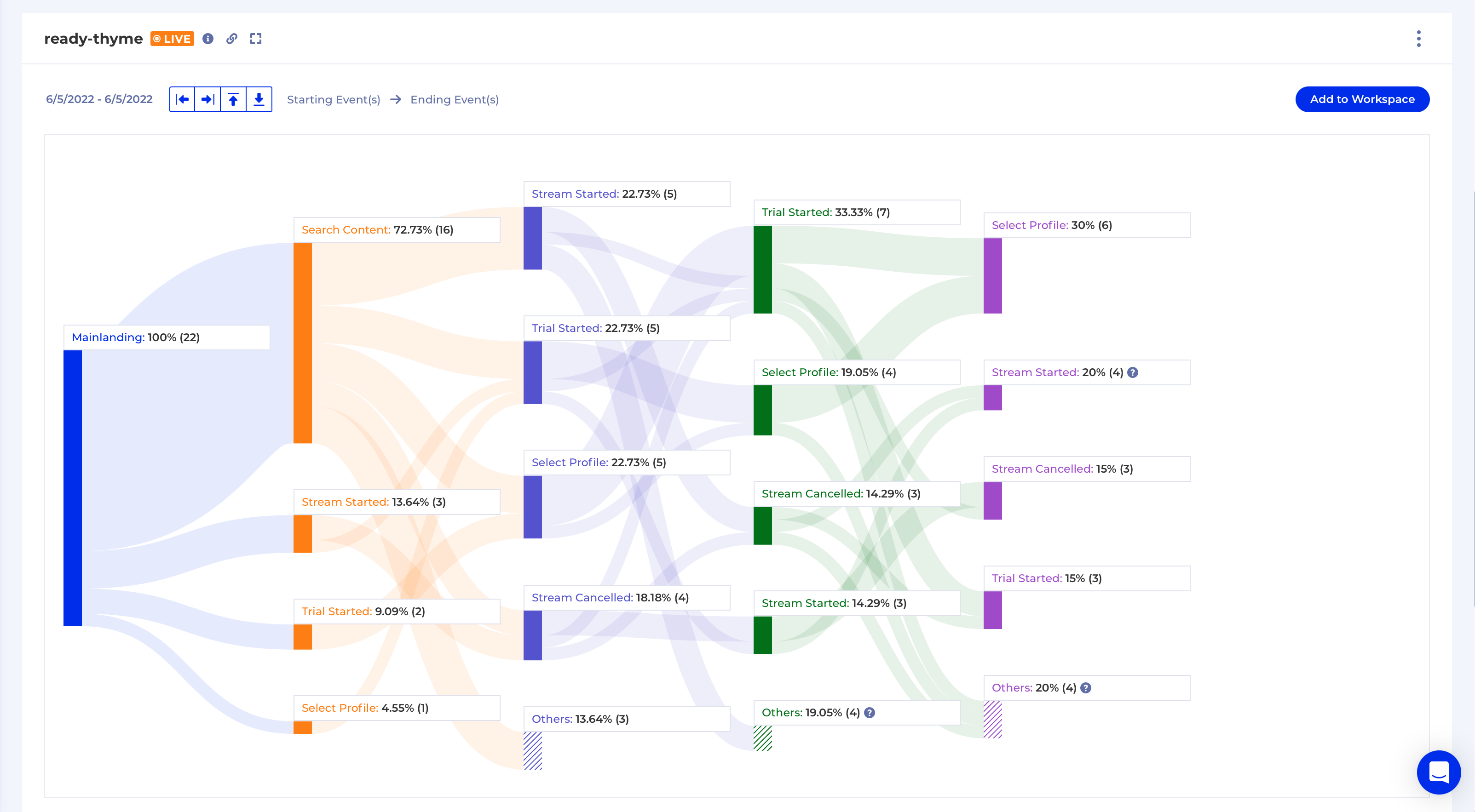
Explore a Path
Here are the main controls at your disposal:
- Select Starting Event(s) and Ending Event(s)
- Direction: switch between
ForwardorBackward. In some cases a user journey is too long and you cannot see a path between theStartingandEnding Event(s)within the maximum amount of allowed steps (10). This is when it is useful to flip the direction and approach the problem from the other end. - Subject: provides the option to analyze by an entity that has a unique id; typical subjects are
User,Visitor,DeviceandSession - Group by (only applicable when there is a Breakdown ):
- Starting: breakdown applied over the
Starting Event(s), subsequent steps do not have to fall within the same breakdown group. - Global:
Starting,Ending Event(s)and all events in between have to happen within the same breakdown group.
- Starting: breakdown applied over the
- Partition:
- Day: by default Partition the events by Day (all events have to happen within the same calendar day).
- Session (OPTIONAL): for customers interested in
Sessionanalysis we can supply an additional option to tell Path that all events have to happen within the same session. - None: this is useful when analyzing longer-term customer behavioral patterns. For example, any Subscription business would be interested in conversions from
TrialtoSubscriptiontoRenewaland try to understand what makes users subscribe and then stay. - Conversion Window: all the steps in the Path have to happen within the same time period defined by the Conversion Window. Supported time units are
Seconds/Minutes/Hours/Days/Weeks/Months/Years. Conversion Window can be used in combination with partitionsDayorNoneso make sure not to use it withPartition: Daywhenever the time unit is set toDaysor longer.
- Left/Right arrows: Can use the two arrows above the diagram to increase or decrease the number of steps in the diagram. Can add up to 10 steps in a Path diagram.
- Merge Events: allows you to specify a list of events to be displayed as one event on the chart. Useful when you want to consider multiple events as one for the purposes of the analysis.
- Expand Events: allows you to breakdown an event based on a property inside the Path.
- Fold Events: allows you to get rid of successive duplicate steps along the Path by folding them into one step.
Path Compression and Expansion
This feature helps you gain even more insight into user journeys by making Path steps more manageable or more understandable. You can use any of the following, or even a combination:
NoteAll of the above apply only on the raw events and cannot be applied over already Merged, Expanded or Folded events.
Merge multiple Events into one
You can use Merge Events to collapse multiple events into one event group to be shown on the chart. Consider the following example: we have a Streaming service which has a mobile app and a web version. We generate a Login event after a user enters the web version and a Launched event when a user enters the mobile app. If we wanted to see what users do after they enter our Streaming service we would have to set the Login and Launch events as a starting point, but since they mean the same thing to us we can group them into one by using merge like this:

Remove duplicate steps with Fold Events
Sometimes when you are exploring user journeys with Path there are multiple consecutive steps where the same event appears over and over (e.g. Page View, Screen, Click). Now you can get rid of successive duplicate steps along the path by folding them into one step.
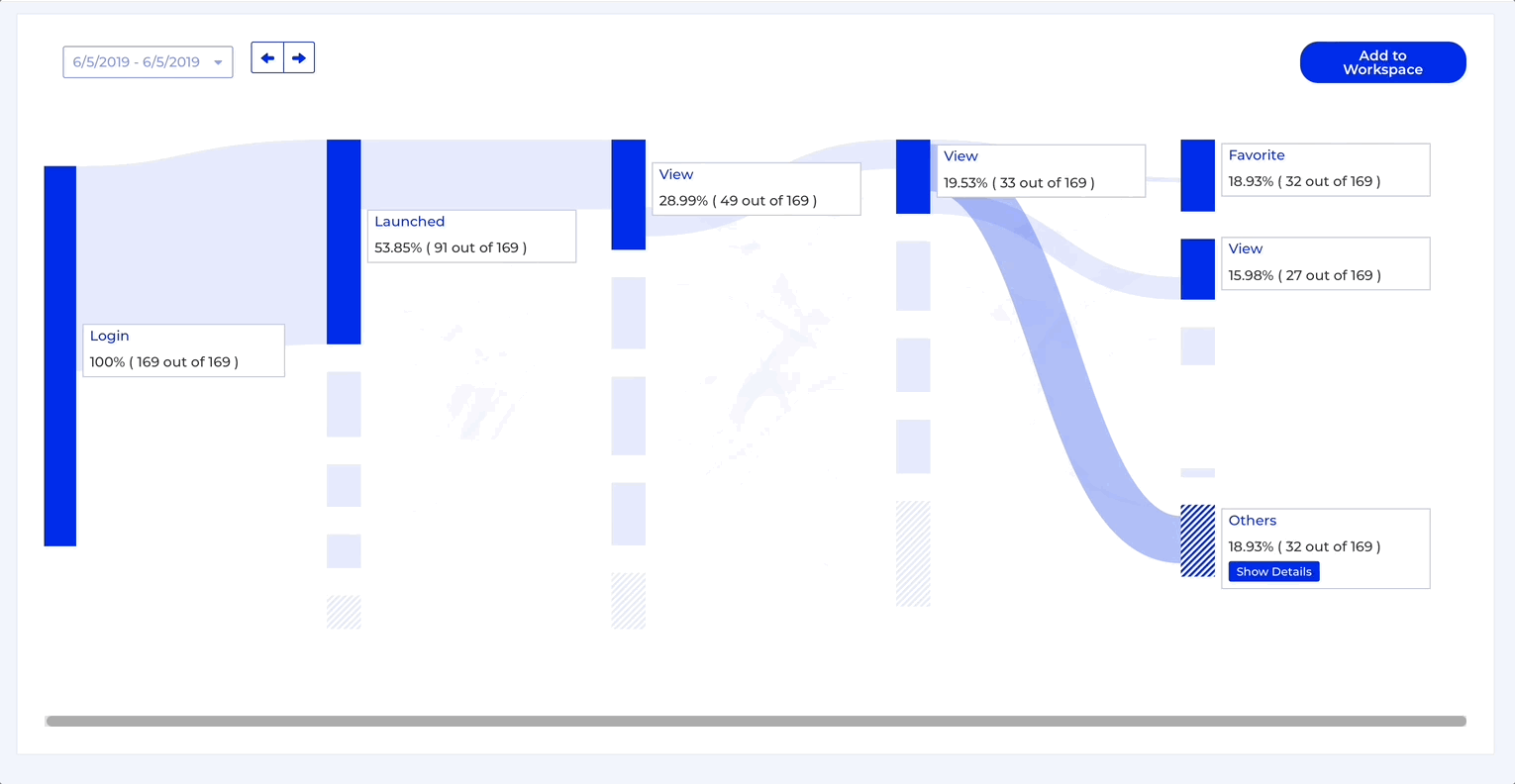
Expand Events for better understanding
Sometimes when using Path you would encounter user journeys where on some of the steps there are events which seen alone do not provide enough information. This is very typical for Page View or Action events. To help understand what is actually going on, you can include a Field to be shown alongside the event like this: Page View[$page_name], Action[$target].
You can configure up to 3 Expanded Events.
Here is an example in which we expand a Favorite event by the App field:
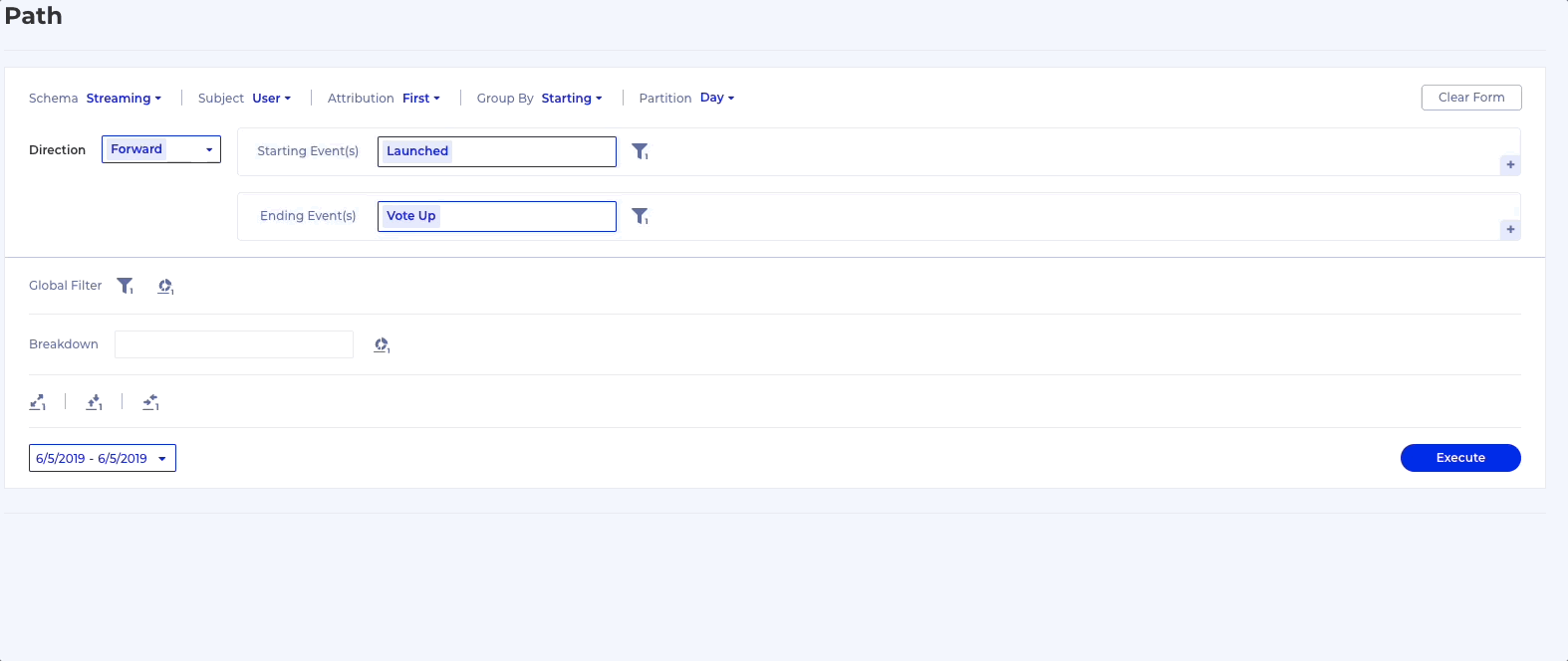
Tips & Tricks
Change the Path length
Once a Path analysis has been executed you can control the number of steps shown on the chart using the control arrows as shown below:

Do a Breakdown using a Field that only exists for the Starting Event(s)
In some cases you'd like to Breakdown by a Field which only exists for the Starting Event(s) and not for the Ending Event(s). For instance, very often the conversion event of a user acquisition workflow will contain a referrer or a marketing campaign id and subsequent events will not have such a field. In this case you will need to make sure Group By mode is set to Starting as Global requires both Starting and Ending Event(s) to be part of the same breakdown group.
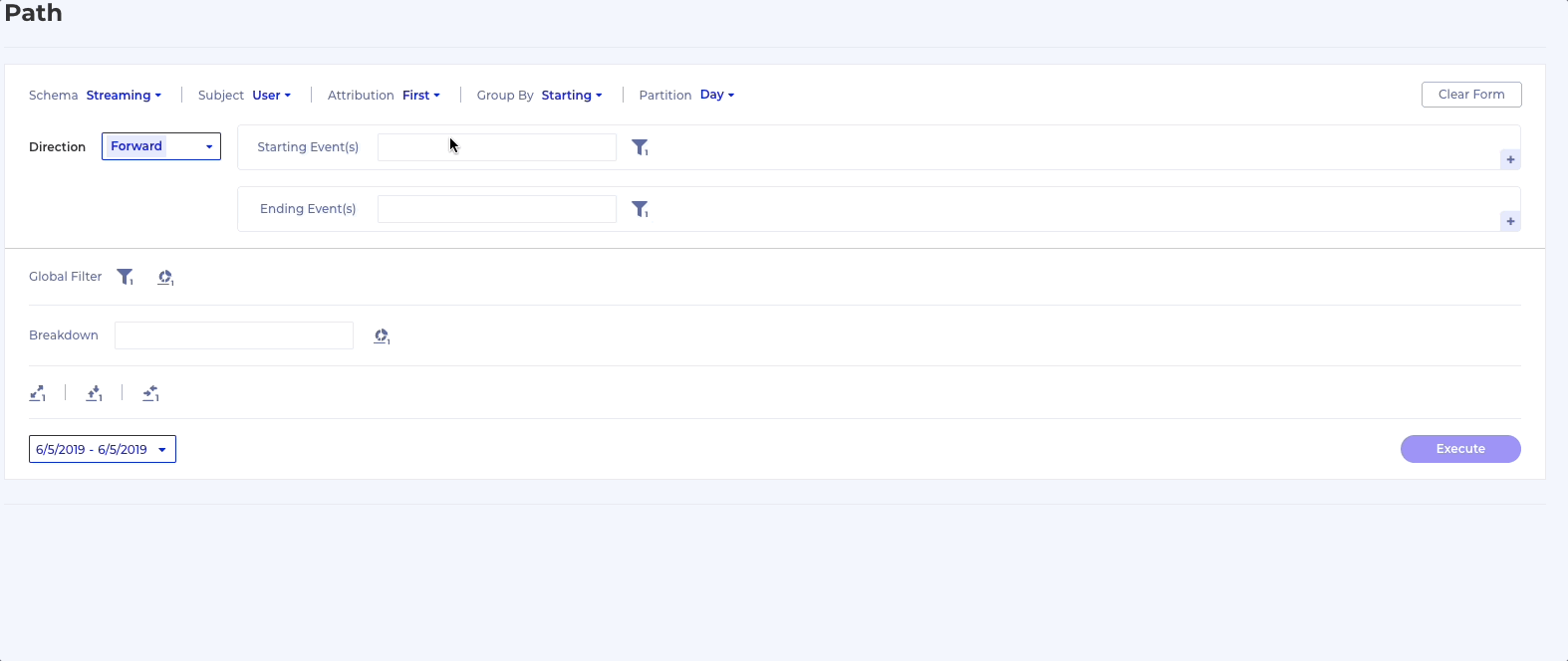
Enforce a time window for the whole Path
If you want to limit Path results to user journeys that were executed within a predefined time window you can use Partition. Partition = Day limits Path results to user journeys that were completed within the same calendar date. In case you need a different granularity you can use Conversion Window as shown below. Finally, you can set Patition = None to turn any time window constraints off.
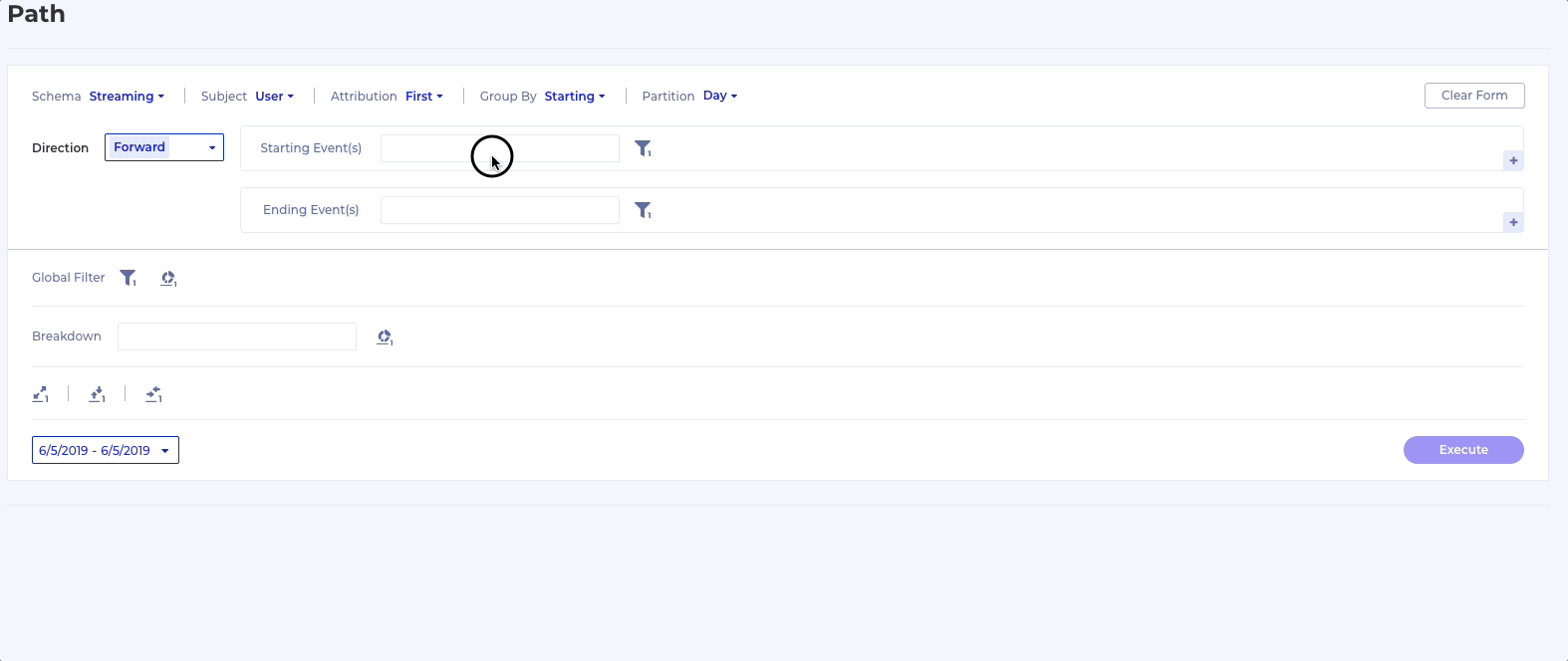
Updated about 1 month ago